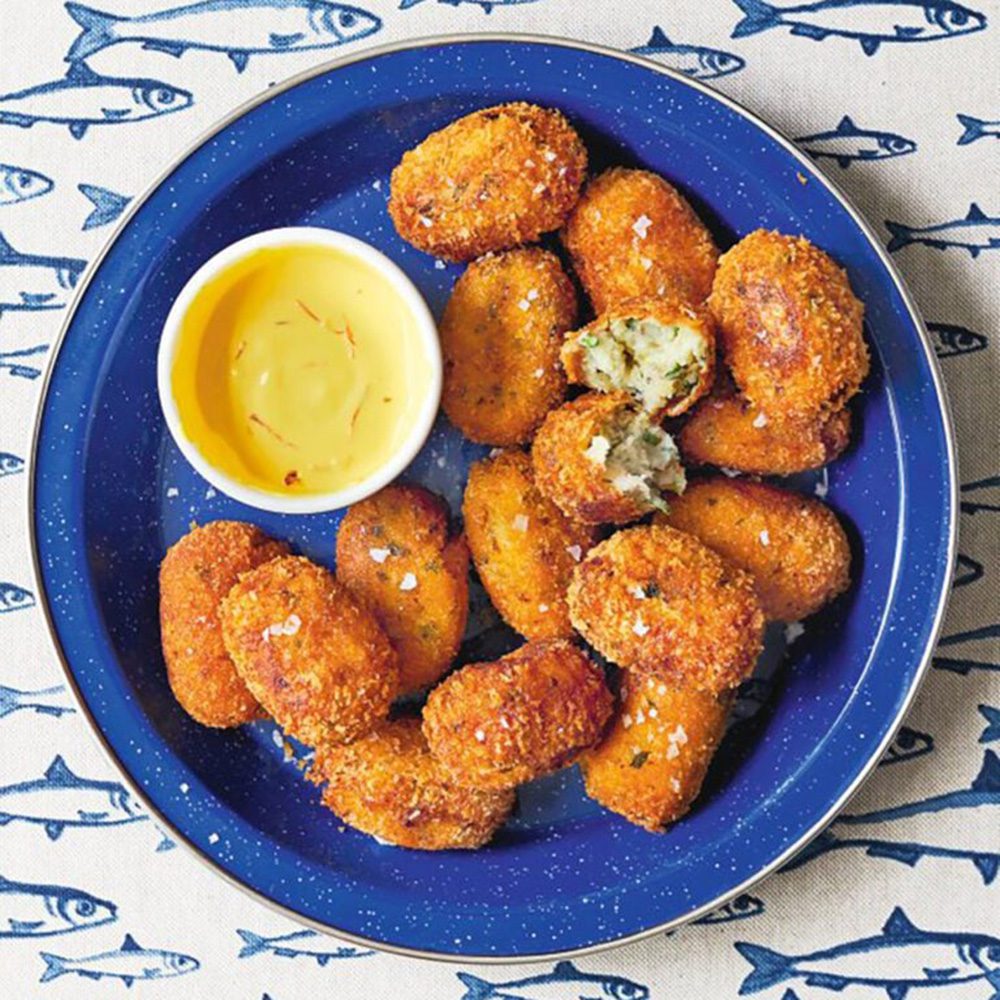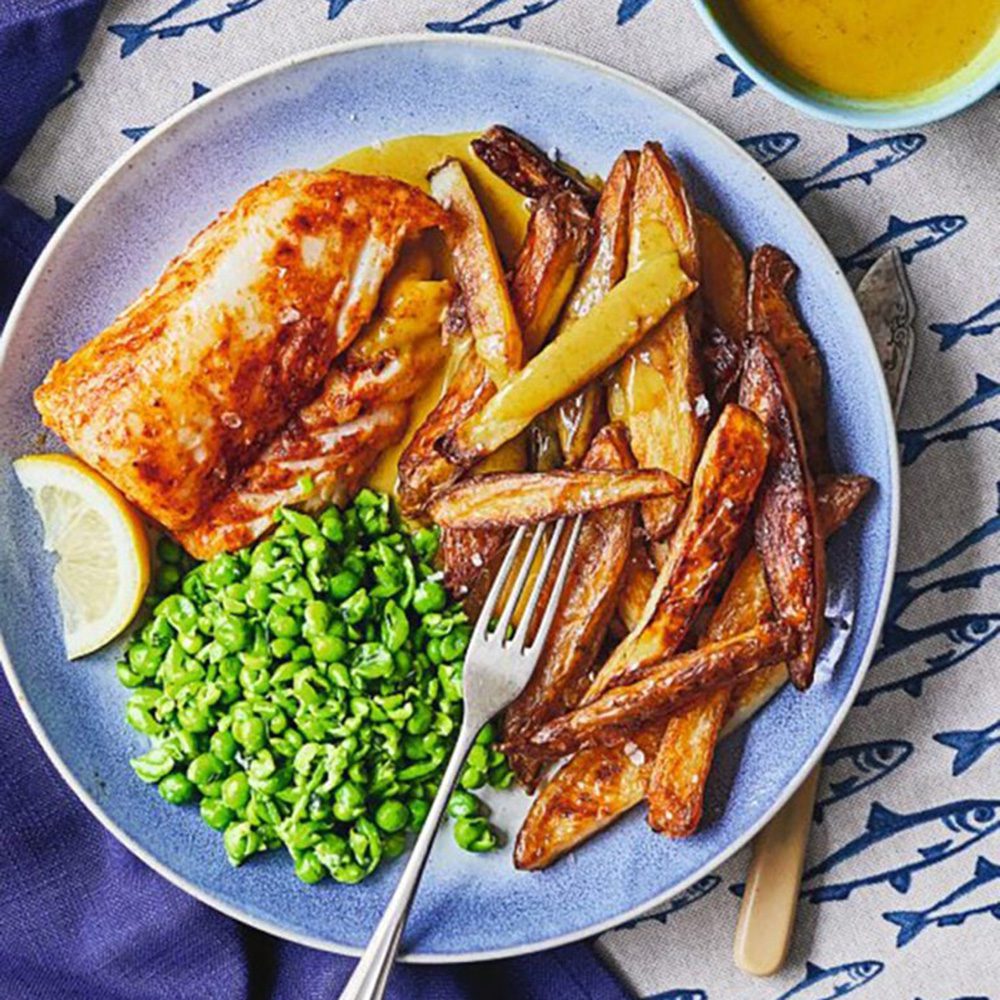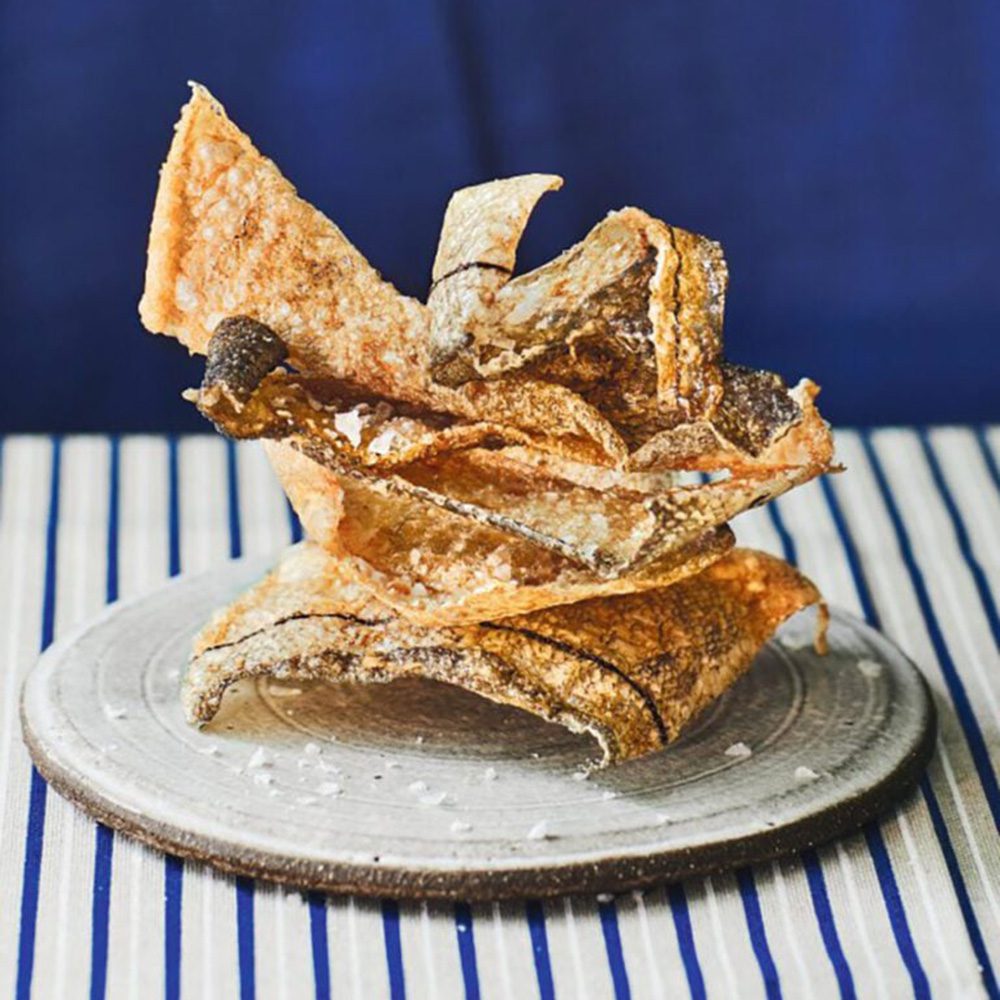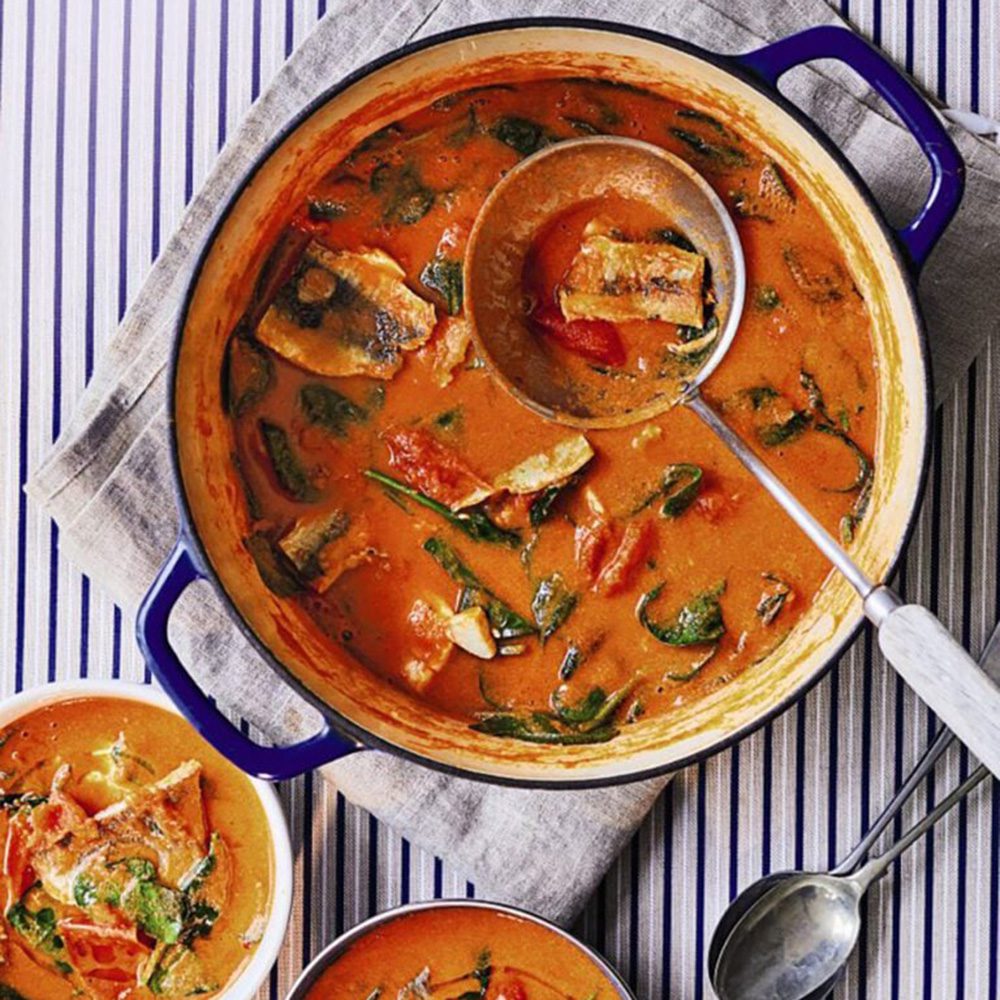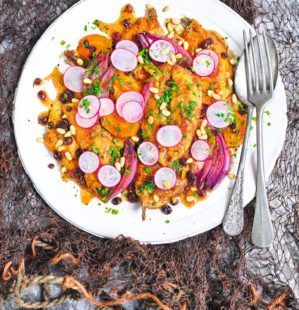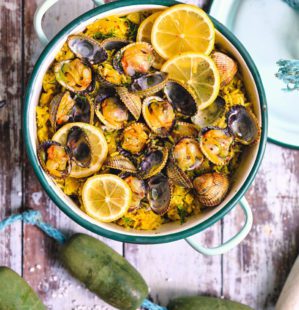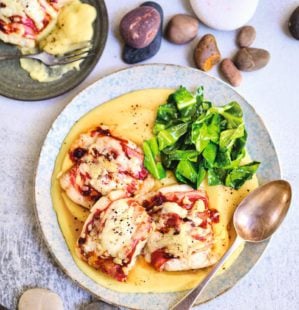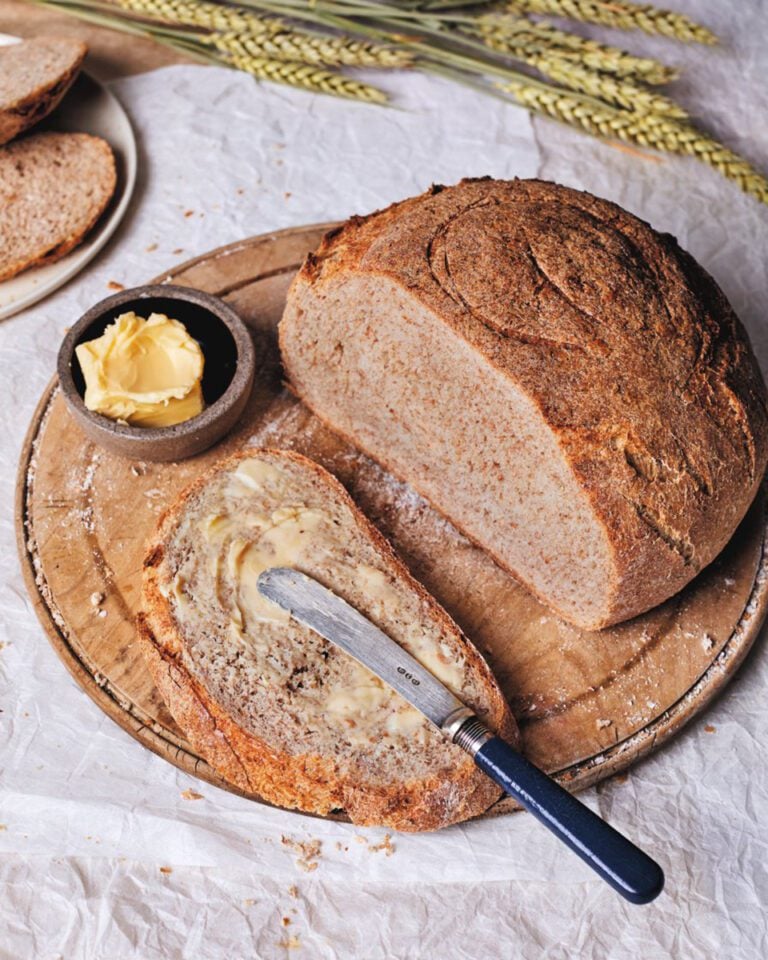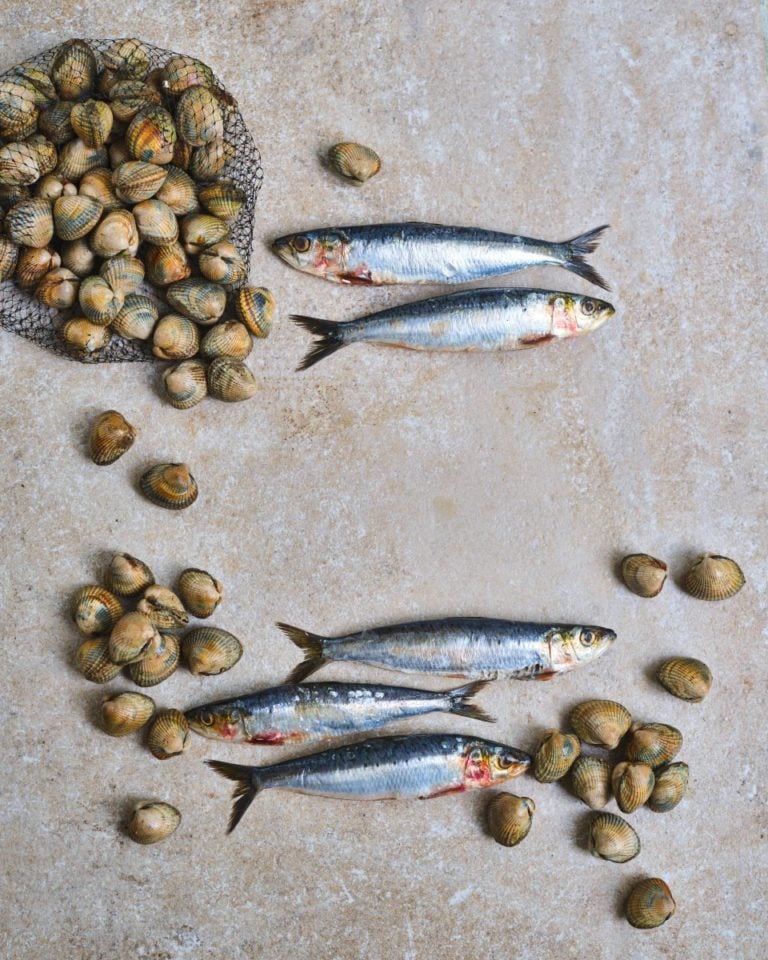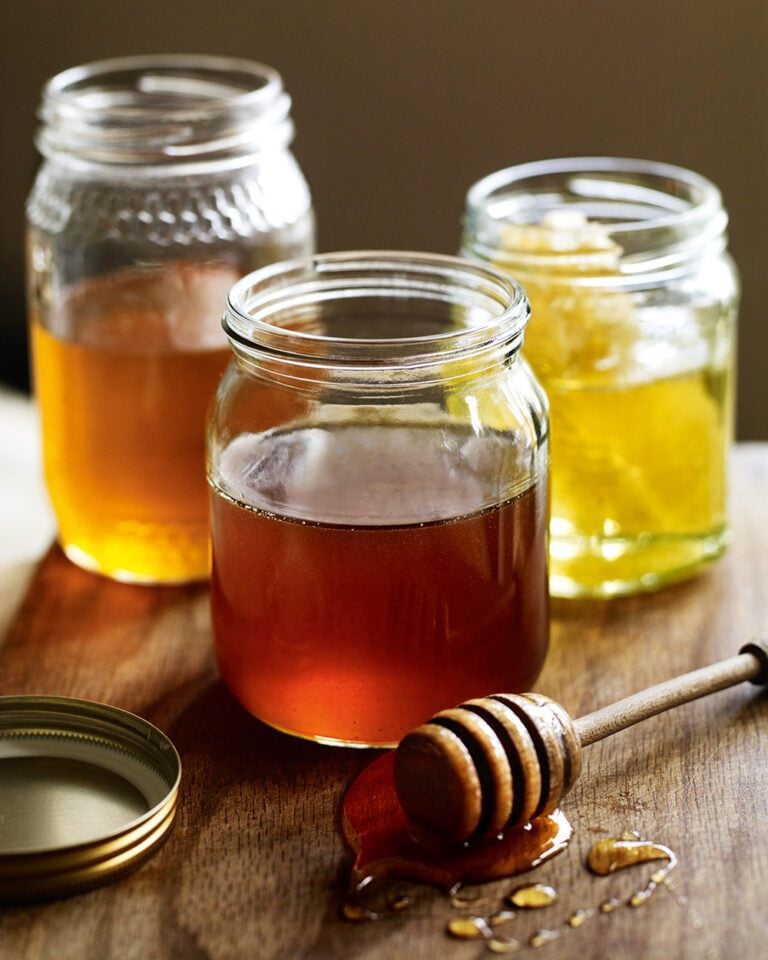Fish skin crackling and shell curry sauce: 4 fin-to-gill cooking ideas to use every scrap of seafood
The nose-to-tail and root-to-fruit movements have helped us to reduce our meat, fruit and veg food waste in recent years and we’re aware of checking the fish we buy is sustainably sourced. But do you know how to use up the odds and ends of seafood? Emily Gussin tackles zero-waste fish cookery at home – with tips from chefs and her own easy-to-follow recipes. It’s time to get fin-to-gill savvy…
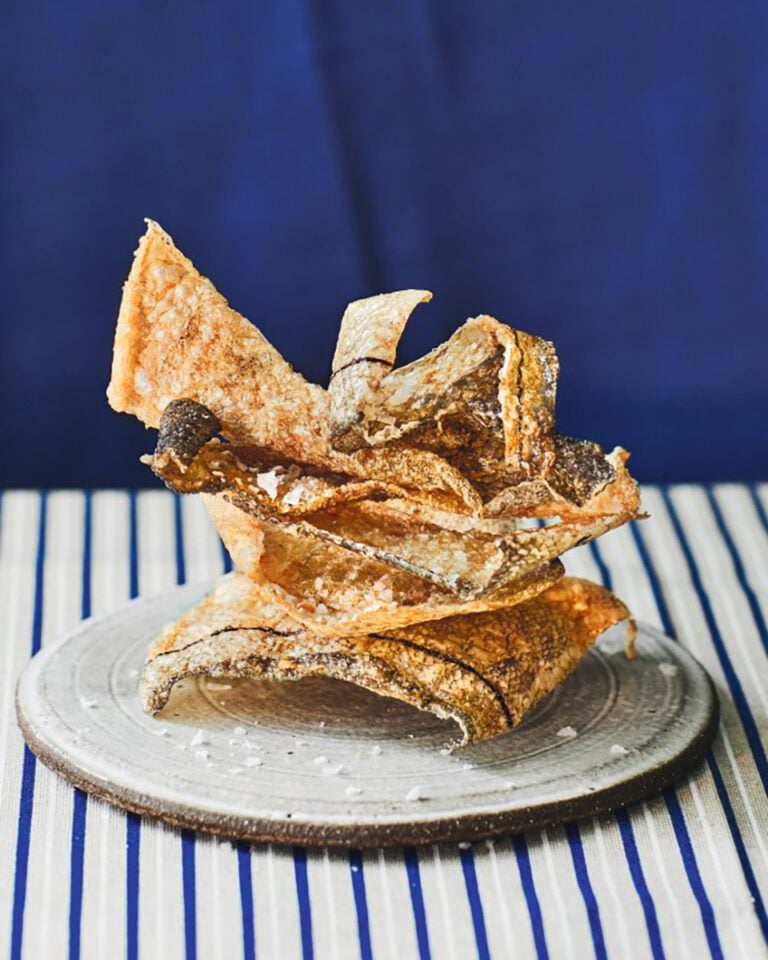
As a nation, we reach for supermarket packaged fillets of fish as standard. We’re squeamish about bones and not confident cooking seafood. This reliance on a few varieties sold as neat fillets has created a gulf between what’s on our plates and the creature it came from – fillets usually make up only around 50 per cent of a fish. The good news is, it’s easy to use every part, including the skin, head and bones – and there’s a lot of reward when you do.
The fin-to-gill approach
Nose-to-tail meat cookery is commonplace in restaurants now but there are chefs doing similar things with fish. Rich Toogood, chef-owner of Prawn On The Lawn in Cornwall and London, says the best place to start is making stock: “If you’re using fish in a paella or anything needing stock, ask for the heads and bones from the fish you’ve bought.” You can also freeze those bits to make stock later. It’s the same with shellfish: “Don’t throw away shells,” Toogood says. “They add loads of flavour to stocks and sauces.”
“A whole fish on a barbecue is near unbeatable,” says Lasse Petersen, executive chef of Llewelyn’s in south London. “For no waste it’s best to cook whole fish.” To remove the fear of under or overcooking, he suggests you “invest in a thermometer, cook the fish until it reaches 40°C, then give it a brief rest until it reaches 50°C”. Once it’s cooked, you can find all the scraps of meat in the head and between the bones (use them for croquettes, below), while the bones and heads can be used for stock or a stew.
A bigger challenge
If you fancy going to the next level, Toogood recommends cooking with larger fish heads, such as cod: “They have a huge amount of meat on the collars – the part just behind the head, which is usually thrown away. These can be treated like ribs you get from beef or pork and are great when floured and fried with crispy chilli oil or a BBQ glaze. Or, if you’re feeling brave, go for the whole cod’s head. There’s a huge amount of meat on it and, oven roasted with herbs and spices, it’s pretty special.”
Fin-to-gill cookery is second nature to Masaki Sugisaki, executive chef at Dinings SW3 in London, thanks to his upbringing in Japan. He loves to use whole squid or cuttlefish. “There’s so much we can do with the internal organs. I like to cure them with salt overnight, then wash off the salt and marinate in sake for an hour. Then I scrape the brown bits out with a spoon and use it in a sauce – it has so much more umami flavour than the flesh!”
Not ready for that? Here’s a more entry-level tip: when you buy fish fillets, keep the skin. Try our crispy skin crackling, below – it’s a simple way to reduce waste and gives you a five-star snack.
You know it makes sense
Buying whole, sustainable fish and seafood is good in so many ways. As Petersen says, “We need to support fishmongers and dayboat fishermen in the same way we’ve got behind high-welfare butchers and farmers.” Plus, using every scrap stretches your meals further, making sustainable choices more affordable. And of course, it means you’re getting the most flavour and nutrition from your fish.
How do I know what’s sustainable?
Speak to your fishmonger about which local fish are in season and how best to cook them. Or check out the MCS Good Fish Guide for up-to-date information on the best choices. For more info, read our guide to buying sustainable fish.
4 simple recipes to start your zero-waste fish journey
Fish scrap croquettes
These herby croquettes filled with fluffy mashed potato and surrounded by a crisp breadcrumb coating are the perfect vehicle for any scraps of fish you have left over from trimming fillets or filleting whole fish. You could also use leftover cooked fish. However you make them, they’re just the thing to serve with a chilled glass of white in the garden with friends.
Fish and chips with no-waste shell curry sauce
Upgrade your Friday night with a very special curry sauce. Using leftover crustacean shells to make a stock, then enriching it with cream and butter gives an intense sauce any fancy French restaurant would be proud of – never mind your local chippy.
Crispy fish skin crackling
If you love pork crackling, crispy chicken skin or even seaweed thins, you’ll love our fishy crisps. These salty crackers are great as a snack or you can crumble them up as a seasoning or garnish.
Spicy tomato fish stew
Soul-nourishing, spicy and tangy, this stew has a smooth, creamy broth base with chunks of tomato and fish. Like the classic French recipe, bouillabaisse, it uses all of the fish to bring depth of flavour, with the fillets added at the end.
Discover more sustainable recipes, including a sweet syrup made from strawberry tops to drizzle over desserts…
Subscribe to our magazine
Food stories, skills and tested recipes, straight to your door... Enjoy 5 issues for just £5 with our special introductory offer.
Subscribe
Unleash your inner chef
Looking for inspiration? Receive the latest recipes with our newsletter
